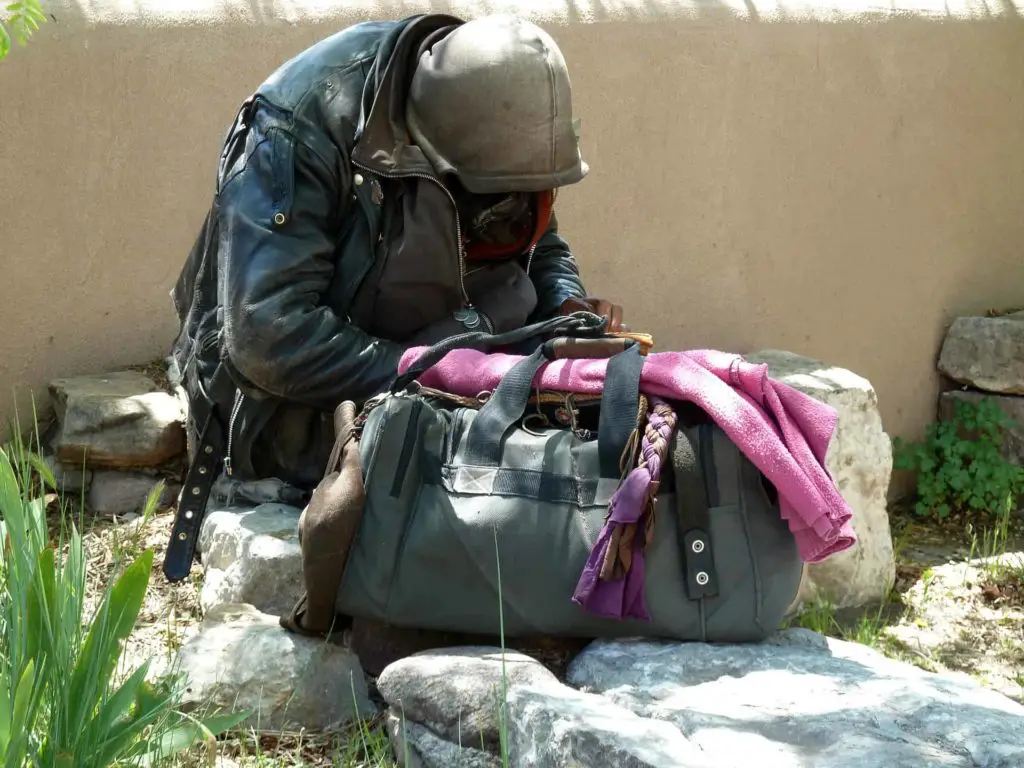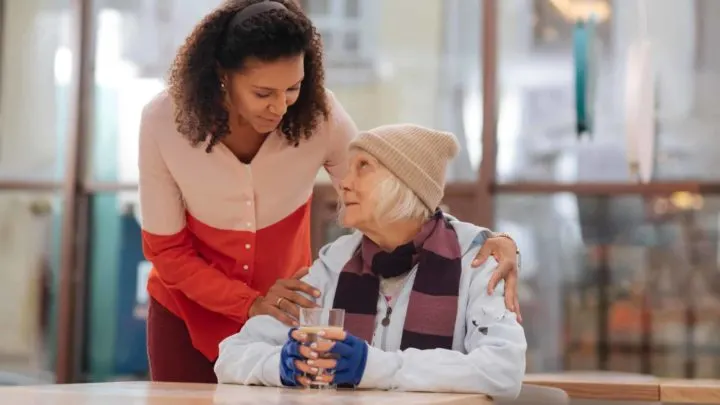Many of us have wondered how to help the homeless. However, getting started can be intimidating or overwhelming especially if you are unfamiliar with the many issues that homeless people face.
On any given night, over 500,000 people are homeless in the United States. Millions of children experience homelessness every year. It is a heartbreaking tragedy, but it’s something that everyone can help with.
Homelessness is a big problem, but don’t be overwhelmed.
Always remember that Mother Theresa said, “Never worry about numbers. Help one person at a time and always start with the person nearest you.”
It’s great that you want to figure out how to help the homeless… but please remember that what you’re really doing is serving individual homeless people. Don’t lump them together or try to tackle the problem all at once. Remember, each person is unique and each one has their own story. Just help one person at a time, and little by little you’ll make the world a much better place.

How to Help the Homeless
There are many ways that you can help the homeless. These ideas can be used individually or one at a time. It’s up to you.
Educate yourself.
There are many myths and stigmas attached to homelessness. However, very few of those ideas are actually true. Homelessness can happen to anyone.
It can be caused by a lack of housing, death of a loved one, loss of a job, divorce, illness, substance abuse, domestic abuse, or even abandonment as a teenager. Everyone has their own unique story, and it usually doesn’t match up with the stereotypes.
Wondering how to help the homeless? Start by breaking the stigma around homelessness.
Acknowledge them.
One of the most heartbreaking things about homelessness is that it often renders a person invisible. People walk by and deliberately ignore them. The loneliness and isolation of homelessness can completely erode someone’s confidence and self-esteem.
The simplest and most affordable way to help the homeless is to simply acknowledge them. See them. Smile at them. Say hello. Introduce yourself. Strike up a conversation. Treat them like the human being that they are and help break the stigma that unfortunately surrounds the homeless in America.
As you get to know the homeless people in your community, you will learn what they need the most. While we have offered some general advice on how to help the homeless in this list, you may find even better ideas from talking to your unsheltered community members.
Feed them.
Homelessness poses some serious challenges to eating. After all, there is no place to safely store food. Even things that don’t need to be refrigerated can spoil quickly on the streets. Community kitchens are often overwhelmed, difficult to access or operate on limited schedules, so they are not always available.
If you choose to feed the homeless, please remember that most homeless people do not have access to dental care. As a result, many people may struggle with hard items like apples, granola, granola bars or nuts. Those items can be difficult to chew and exacerbate dental pain. As much as possible, try to provide soft and nutritious foods that are gentle on teeth.
Gift cards to grocery store chains or fast food restaurants are a great option. If you’re trying to figure out how to help the homeless, providing gift cards solves two problems: it provides food and a safe opportunity to rest inside for a while without being accused of loitering.
Provide water.
Dehydration is a major concern for the homeless community. Especially during the hot summer months, carry extra water bottles with you. These can be a lifesaver for thirsty, dehydrated members of our community who lack proper shelter and water access.
In summer, frozen water bottles can also provide comfort and cooling.
Donate the items they actually need.
Being homeless is difficult in any season. As you are shopping for your personal needs, remember those who cannot afford to buy their own supplies. When it comes to how to help the homeless, donating is one of the most common and oft-recommended ways.
For example, in summertime, it can be very helpful to pick up an extra bottle of sunscreen, a hat, sunglasses, or handheld fans. Umbrellas can also be used to block the sun, since many homeless people move at night and sleep during the day. Those items can provide protection and comfort during the hot summer days.
In winter, donate spare coats, gloves, scarves, boots, and other warm gear. Sleeping bags and other heavy-duty items are especially helpful during this season.
There are some supplies that are needed all year-round, such as clothes, shoes, blankets, tarps and hygiene items. Donate gently-used items and expect that they will be thrown away when dirtied. Many homeless people do not have access to laundromat facilities to clean their gear, so it is often thrown away and then replaced with another donation. Because of this, it is generally wise not to splurge on expensive items.
Travel-sized hygiene supplies are helpful.
Hygiene supplies are helpful. Please focus on hotel and travel-size bottles of soap, shampoo, and other toiletries.
Whenever practical, avoid assembling these supplies in kits and instead ask each person what they need. Often, partial kits will be thrown away after what is needed has been removed.
Although your goal is to figure out how to help the homeless, it’s important to recognize that it just isn’t practical or helpful to expect someone to carry around supplies they don’t need.
Donate first aid supplies if you can.
First aid supplies are important and needed, but often forgotten. If you have basic first aid supplies, these are often very appreciated by those who lack adequate shelter.
Remember their furry friends.
If you want to learn how to help the homeless, don’t forget about their furry companions. A pet may be a source of comfort and protection while sleeping on the streets. Providing a treat, food or water for the pet can be an act of kindness for both the animal and the owner.
You can also provide this list of free veterinary care resources, in case their pet needs help.
Offer to help with paperwork.
Navigating benefits can be difficult when you don’t have a phone or a stable address. Many shelters will offer mail and phone services to homeless individuals, but many homeless people do not know that these programs exist.
Help someone connect with these resources. They may be eligible for a free cell phone, food stamps, disability benefits and so much more. Offer to help someone apply for these benefits, and you could make a significant long-term impact on their lives. That’s one of the best ways to start when you want to learn how to help the homeless!
Set them up for success.
Of course, you could also help them apply for jobs if they are interested! Sometimes, a homeless person may want to work but be unable to secure employment because they lack a stable address, access to showers and hygiene facilities, or clean work attire. You can help by donating clothing and/or pointing out community resources that can meet those needs.
Become an advocate and get involved.
Once you become more familiar with the issues facing homeless people, please educate others. Raise awareness in your community and advocate for homeless issues.
This could include things like these:
- Joining a coalition or organization like Housing Not Handcuffs.
- Volunteering at a shelter or agency
- Contacting legislators and lawmakers
- Following local politics
- Advocating for low income housing, group homes and shelters
- Contacting the media
- Helping homeless people register to vote
Become an advocate for issues like affordable housing, which directly affect homelessness. Stand up for homeless shelters and other agencies that exist in your neighborhood. Raise community awareness and do what you can to make your community more friendly and helpful to your local homeless community.
Now that you know how to help the homeless, click the link below for more ways to save money and get free stuff!

